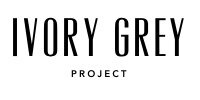AI Employees for Businesses: A Practical Starter Guide
You’re drowning in repeatable work: ad copy, outlines, newsletters, scheduling, inbox triage. An “AI employee” takes those off your plate without hiring headcount. Done right, you get consistent drafts on rails and you keep creative direction and approvals.
WHAT’S AN AI EMPLOYEE?
A calibrated ChatGPT Project with light automations (“connectors”) that performs scoped, repeatable tasks you don’t want to do every day, like ad copy, blog outlines and drafts, newsletters, scheduling, inbox triage.
THE FRAMEWORK: SCOPE → CONNECT → CALIBRATE → MEASURE
Start by scoping a single role with a clear outcome. Resist the urge to solve everything at once. Pick the weekly task you touch most, the one with clear inputs and a standard output. Give it a name (Social Content Drafter, Blog Writer, Email & Newsletter Drafter, Inbox Triage, or Calendar & Meeting Prep) and write down what “good” looks like before you build anything. Two or three sentences are enough: format, length, and the acceptance bar you’ll use to say “yes, ship it.”
Once the role is defined, connect only the tools this employee truly needs inside your ChatGPT Project. For most marketing tasks, Google Drive is the first connector so the model can read briefs and past work. Add Gmail if you’re sorting messages or summarizing chains. Add Calendar if you want meeting prep. If you don’t need an output to hit Canva yet, don’t over-connect. Minimal connections reduce surprises and keep the workflow reliable.
Calibration is where the results happen. Work in tight loops: hand the Project a real brief, review the output against your success criteria, add a single instruction or example, and run again. Short cycles beat long prompts every time. When an iteration finally hits your standard, save those instructions in the Project settings so you never repeat yourself. Include the role, the inputs and outputs, the guardrails, the connectors in use, and the review-to-publish path.
Finally, measure what matters so you can prove the win. Track minutes saved per task, the percentage of drafts approved on first pass, and weekly throughput without quality dropping. You don’t need a dashboard, just a running note with before/after numbers will show you whether the “employee” is paying for itself.
WHAT “GOOD” LOOKS LIKE: CLEAR OUTPUTS
For a Blog Writer role, your outputs should be predictable and easy to review. Expect an H2/H3 outline first, followed by a 900–1,200 word draft with bold subheads, tight paragraphs, and a few skimmable lists when they serve the reader. Ask for an SEO pack that includes a primary keyword, three to five secondary keywords, several SEO titles, a meta description under 160 characters, tags, and a 30–40 word excerpt. Have the Project propose two to four internal links to your existing content and finish with a CTA tailored to your current offer. Delivery should be a Google Doc with a short summary at the top and a shareable link.
For a Social Content Drafter, ask for five captions that open with a strong hook, deliver a specific benefit, and close with a clear CTA. Keep them tight, preferably under 150 words with tasteful line breaks and include a short, relevant hashtag set. If you publish carousels, request a seven-slide outline where slide one promises the outcome and the last slide carries the CTA. Keep all outputs in a single dated document so approvals are fast.
GUARDRAILS AND BOUNDARIES
Scope boundaries prevent messes. Decide up front that this role does not publish without your sign-off, doesn’t make legal or medical claims, and never touches image licensing or your content management system. Make it a rule not to paste private or sensitive data into the model. Link to Google Drive with appropriate access instead. When in doubt, the AI should summarize or ask for clarification, not improvise.
TROUBLESHOOTING
Expect a bumpy first week. When tone feels off, feed it short positive and negative examples and one “tone bar” sentence that captures your voice. When the model fabricates details, make a rule that it must summarize any sources used and ask for links when uncertain. If structure gets messy, provide a micro-outline before each task and ask the model to do a final formatting pass. Most issues vanish once these rules are saved in the Project instructions.
A SIMPLE 7-DAY LAUNCH PLAN
Give yourself one focused week. On day one, choose a role. Day two, connect only the essential tools, usually Drive and Docs. Day three, create an instruction block and customize voice, guardrails, and delivery folders. Day four, run two or three real briefs and iterate in tight loops. Day five, lock the instructions and start a short change log. Day six, ship a live task and measure minutes saved and first-pass acceptance. Day seven, write a one-paragraph debrief and clone the pattern for your next role: email, social, etc.
Make your first hire. Treat each AI employee like you would a human one: scope the role, connect the tools, script the workflow, and calibrate until outputs are publish-ready. Save your final instructions in the project settings so you never repeat yourself, and keep iterating with short test runs to catch mistakes early. When you do this, daily drains (ad copy, outlines, newsletters, scheduling) start running on rails, freeing you to do the creative and relationship work only you can do. Start with one role, prove the time savings, then duplicate the pattern across your business.


